
Monocoque, also called structural skin, is a structural system in which loads are supported by an object's external skin, in a manner similar to an egg shell. The word monocoque is a French term for "single shell".

Dornier Flugzeugwerke was a German aircraft manufacturer founded in Friedrichshafen in 1914 by Claude Dornier. Over the course of its long lifespan, the company produced many designs for both the civil and military markets.

Claude (Claudius) Honoré Désiré Dornier was a German-French airplane designer and founder of Dornier GmbH. His notable designs include the 12-engine Dornier Do X flying boat, for decades the world's largest and most powerful airplane. He also made several other successful aircraft.
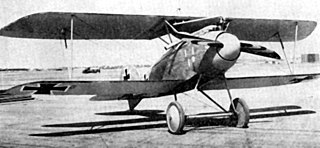
The Albatros D.III was a biplane fighter aircraft used by the Imperial German Army Air Service (Luftstreitkräfte) during World War I. A modified licenced version was built by Oeffag for the Austro-Hungarian Air Service (Luftfahrtruppen). The D.III was flown by many top German aces, including Wilhelm Frankl, Erich Löwenhardt, Manfred von Richthofen, Karl Emil Schäfer, Ernst Udet, and Kurt Wolff, and Austro-Hungarians like Godwin von Brumowski. It was the preeminent fighter during the period of German aerial dominance known as "Bloody April" 1917.
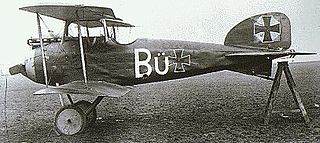
The Albatros D.I was a German fighter aircraft used during World War I. Although its operational career was short, it was the first of the Albatros D types which equipped the bulk of the German and Austrian fighter squadrons (Jagdstaffeln) for the last two years of the war.

The Pfalz D.III was a fighter aircraft used by the Luftstreitkräfte during the First World War. The D.III was the first major original design from Pfalz Flugzeugwerke. Though generally considered inferior to contemporary Albatros and Fokker fighters, the D.III was widely used by the Jagdstaffeln from late 1917 to mid-1918. It continued to serve as a training aircraft until the end of the war.
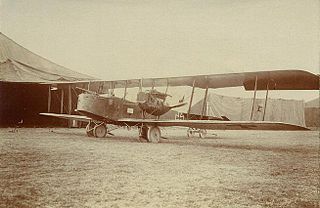
The Friedrichshafen G.III was a heavy bomber designed and manufactured by Flugzeugbau Friedrichshafen. They were used by the German Imperial Air Service during World War I for tactical and limited strategic bombing operations. After the end of the war a number of Friedrichshafen bombers were converted into transport aircraft while a small number also saw service as dedicated airliners.
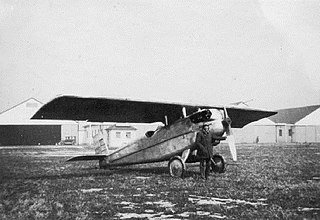
The Dornier Do H Falke was a German single-seat fighter, designed by Claude Dornier and built by Dornier Flugzeugwerke. Although an advanced design for its time, being evaluated by the United States Navy as the Wright WP-1, it did not go into production.

The Roland D.VI was a German fighter aircraft built at the end of World War I. It lost a fly-off to the Fokker D.VII, but production went ahead anyway as insurance against problems with the Fokker.
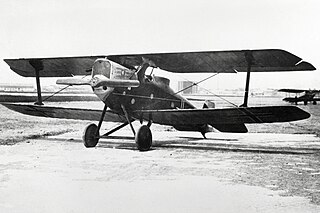
The Hannover CL.V was a biplane ground-attack aircraft built in Germany during World War I, which saw some service and additional production in Norway following the war.

The Junkers D.I was a monoplane fighter aircraft produced in Germany late in World War I, significant for becoming the first all-metal fighter to enter service. The prototype, a private venture by Junkers named the J 7, first flew on 17 September 1917, going through nearly a half-dozen detail changes in its design during its tests. When it was demonstrated to the Idflieg early the following year it proved impressive enough to result in an order for three additional aircraft for trials. The changes made by Junkers were significant enough for the firm to rename the next example the J 9, which was supplied to the Idflieg instead of the three J 7s ordered.

The Short Silver Streak was the first British all-metal aircraft. It was designed and built by Short Brothers at Rochester, Kent, England. Although Flight magazine claimed that it was the first instance of stressed skin construction in the world, it was preceded by a number of Dornier designs, including the Dornier-Zeppelin D.I, which was ordered into production.
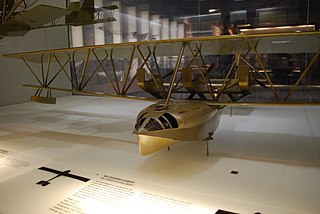
The Zeppelin-Lindau Rs.I was a large three-engined biplane flying boat designed by Claudius Dornier and built during 1914–15 on the German side of Lake Constance. It never progressed beyond taxiing trials as it was destroyed in a storm.
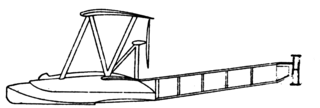
The Zeppelin-Lindau Rs.II was a biplane flying boat, designed by Claudius Dornier as a follow-on to his Zeppelin-Lindau Rs.I and built during 1914–1915 on the German side of Lake Constance. Initially this aircraft was powered by three engines mounted inside the hull driving three pusher propellers via gearboxes and shafts. The later version was powered by four engines in two push-pull nacelles mounted between the wings.

The Zeppelin-Lindau Rs.III was a large four-engined monoplane flying boat designed by Claudius Dornier and built during 1917 on the German side of Lake Constance at the Zeppelin-Lindau works.

The Zeppelin-Lindau Rs.IV was a Riesenflugzeug monoplane all metal flying boat with a stressed skin hull and fuselage developed for the Imperial German Navy to perform long range patrols over the North Sea. It had been developed by Claudius Dornier while working for Zeppelin in the town of Lindau.

The Zeppelin-Lindau CL.II was a German single-engine two-seat biplane with an all metal structure, built by Zeppelin-Lindau during World War I.

The Zeppelin-Lindau CS.I was a German single-engined reconnaissance seaplane with a low-wing monoplane layout.

The Zeppelin-Lindau Gs.I, often known post-WWI as the Dornier Gs.I after its designer Claude Dornier, was a civil flying boat developed immediate post-war from a military prototype. Its passenger cabin seated six. Only one was completed, and that was eventually scuttled to keep it out of Allied hands. Another of the military prototypes was intended to have a bigger, nine seat cabin and other refinements but the Gs.II was incomplete when discovered by Allied inspectors.

The Zeppelin-Lindau V I was a metal-framed, pusher configuration, German sesquiplane, designed by Claude Dornier. It flew on 13 November 1916 and crashed on the first flight.





















